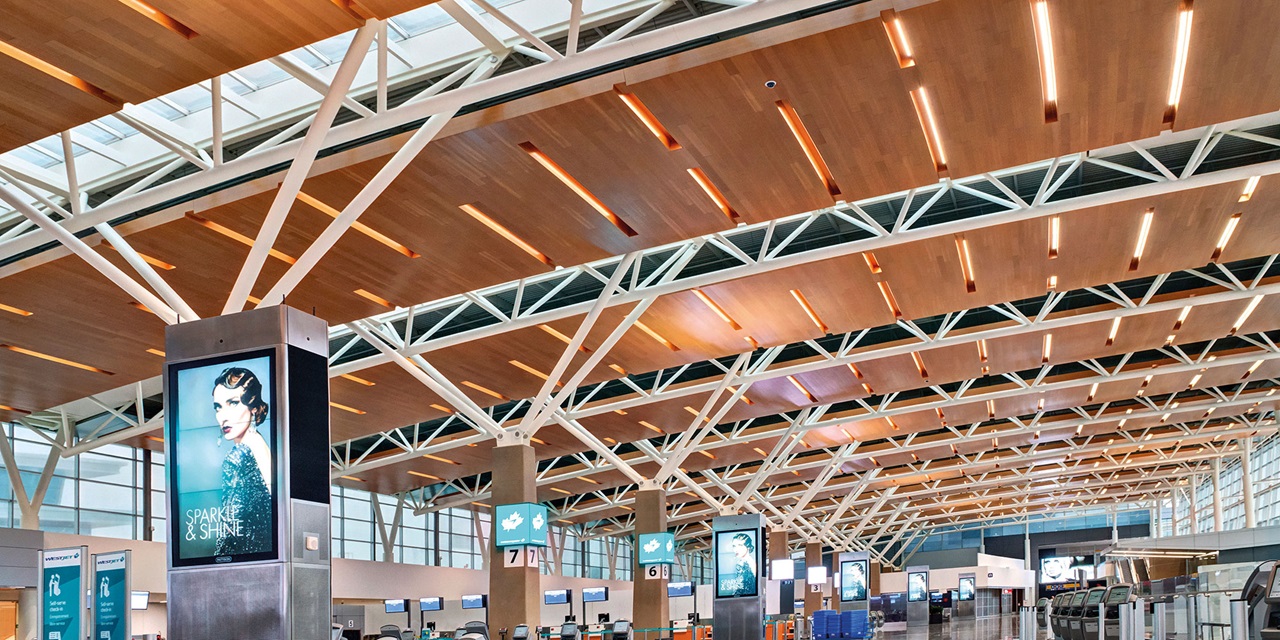How can the noise in an airport be dampened when the floor is tiled and the façades are glazed? In the new terminal of Calgary International Airport, the planners solved this dilemma with a spectacular acoustic wooden ceiling. The sound is absorbed by a thin acoustic nonwoven from Freudenberg Performance Materials.
In noisy environments, our ears like to “play deaf”. We hear through the everyday rush of traffic, forget the roaring and zooming, the murmuring and laughing around us in the sidewalk café. The brain suppresses all sound-information which is seen as not useful. This suppression is a form of protection without which it would be hard even to hear each other speak in a noisy environment. Sometimes, it would be great to be able to shut our ears at airports and block out the intense noise level of terminals during the day. The babble of conversations, rattling luggage carousels and the rolling of suitcases create a cacophony like an orchestra tuning up.



